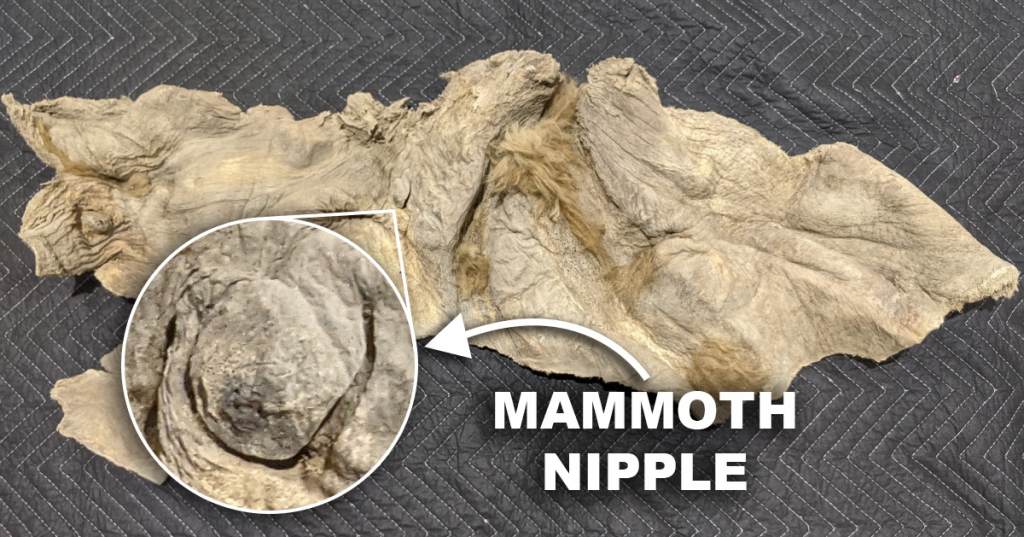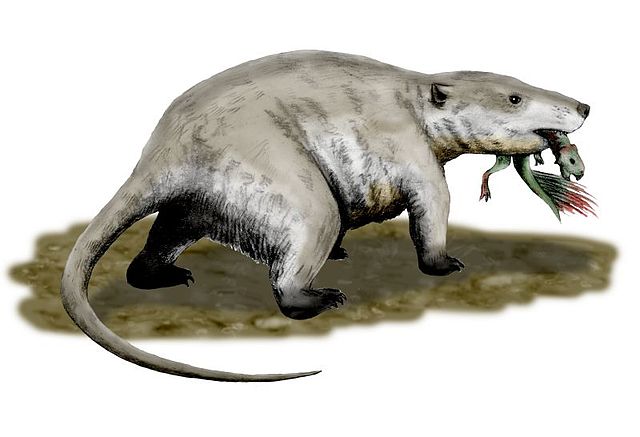It’s been widely accepted for generations that dinosaurs once ruled the Earth. Movies like the Jurassic Park franchise have bolstered these claims by presenting images of terrifying reptiles capable of unrelenting blood baths. Not surprisingly, humans and other mammals fall squarely at the bottom of the food chain in such flicks.
These depictions echo a long-held sentiment that the first mammals to inhabit the planet ate insects and did everything they could to avoid their reptile counterparts. Their small size helped them go undetected. But a recent fossil find is rewriting everything we know about the Cretaceous period and where mammals ranked in the food chain.
As it turns out, dino-eating mammals were a thing. How common were they? Scientists have yet to work this question out. Nevertheless, one thing’s for sure. The “Circle of Life” wasn’t as clear-cut as we assume.
Frozen in Time
About 125 million years ago, a death match between two Cretaceous animals came to a surprising stalemate … mid-bite. That’s when a volcanic flow interrupted their scuffle, burying the two animals in layers of molten lava.
The lava scalded their flesh, killing them instantly. But it also preserved their skeletons, immortalizing the record of their final struggle.
Fast forward to 2012. A Chinese farmer unwittingly stumbled upon the fossilized scene. After turning the find over to officials, it sat in the equivalent of fossil purgatory. After all, cases of forged fossils from this area are nothing new. But once the details of its provenance and authenticity were determined, researchers were in for a shock.
The find passed the sniff test. Studying the authenticated fossil began in earnest, revealing a new side to the coexistence between dinosaurs and mammals.
A One-of-a-Kind Fossil
To say the fossil is unprecedented proves an understatement. Jordan Mallon, a paleobiologist with the Canadian Museum of Nature, puts it this way. “I’ve never seen a fossil like this before.”
A new fossil find from the Lujiatun Member of the Lower Cretaceous Yixian Formation of China shows a psittacosaurid dinosaur being attacked by a smaller mammal, making paleontologists rethink what we knew of early food chains. pic.twitter.com/5h7Gir3cFG
— IGN (@IGN) July 24, 2023
What are the implications of this discovery? Genuinely groundbreaking, according to Steve Busatte, a paleontologist at the University of Edinburgh. He explains, “This turns the old story on its head. We’re used to thinking of the Age of Dinosaurs as a time when dinosaurs ruled the world, and the tiny mammals cowered in the shadows.”
Put another way, mammals weren’t merely simpering rodents, slinking around in the background. Some, like the mammal in the fossil, actively hunted dinosaurs.
A Battle to the Death
Of course, this begs the question. What does the fossil show?
It contains the skeletons of two long-extinct animals. The first is Repenomamus robustus, a badger-like mammal comparable in size to a modern-day housecat. The second animal? Psittacosaurus lujiatunensis, a dinosaur with a parrot-like beak that stood around the height of a medium-sized dog.
Despite the size difference, Repenomamus robustus clearly had the upper hand. Yes, Psittacosaurus lujiatunensis was bigger and a dinosaur. But it also had an obvious disadvantage. As an herbivore, it spent much of its time eating plants, not engaging in deadly battles.
Death Is in the Details
The postures each skeleton took at the moment of fossilization support this conclusion. For starters, the mammal sits perched atop the reptile.
Its teeth lie buried in the reptile’s ribcage, and its paws grip the dino’s hind leg and jaw. These details indicate the mammal as the obvious aggressor in this prehistoric conflict.
But should we read so much into this strange fossil? After all, it could involve rewriting history as we know it.
Other Fascinating Fossils
As it turns out, this isn’t the first time a mammal fossil has pointed to dinosaur meat as an active part of mammalian diets. In 2005, the American Museum of Natural History in New York revealed a fossil of another Repenomamus robustus with a baby Psittacosaurus in its stomach.
So, it appears there’s history between these two species. With the dinosaur rarely coming out on top. As we stay tuned to discover what else scientists have to say about this discovery, why not explore some other bizarre and unbelievable fossils? One of our faves? This well-preserved mammoth nipple, dating to the Ice Age!

It has provided scientists with new insights into the lives of woolly mammoth moms and their babies. Acquired in Summer of 2022 by Ripley’s, it’s one of many incredible artifacts you can see on display when you visit one of our Odditoriums. Find an attraction near you!
By Engrid Barnett, contributor for Ripleys.com









